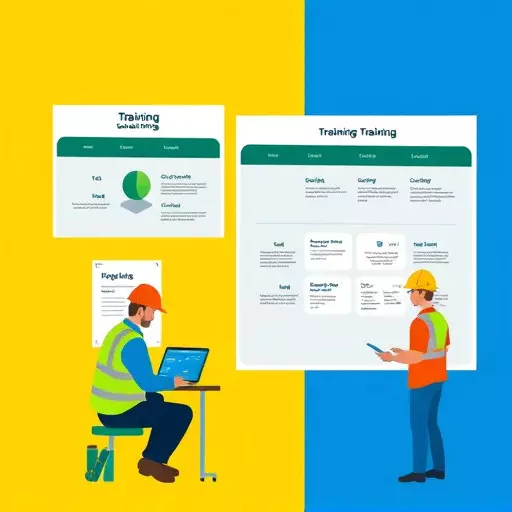Environmental health and safety (EHS) training planning is essential for maintaining safe work environments, with EHS professionals ensuring that employees receive tailored occupational safety training aligned with their specific roles. The integration of advanced compliance training scheduling tools has transformed the process by offering automated scheduling, progress tracking, and role-specific learning modules, which help in aligning training with regulatory standards and keeping safety protocols up to date. These digital solutions streamline the training cycle, significantly reducing the risk of non-compliance and protecting both financial and human resources. By leveraging these sophisticated tools, organizations can enhance the effectiveness of their EHS training programs, ensuring employees are knowledgeable about safety procedures in accordance with industry standards and government regulations. This technology-driven approach is crucial for meeting the dynamic demands of occupational safety training and environmental health and safety training planning, underscoring its importance in modern work settings.
Navigating the complexities of workplace safety necessitates a strategic approach to environmental health and safety (EHS) training. This article delves into the pivotal role of role-based safety training calendars, an indispensable tool for optimizing EHS training planning and crafting tailored occupational safety programs. We explore how compliance training scheduling tools can be leveraged by EHS professionals to ensure that each employee’s learning path aligns with their unique responsibilities. By highlighting the significance of customized training calendars in enhancing safety awareness, we provide strategies for implementing these systems across a variety of work settings, ensuring a safe and compliant workplace for all.
- Optimizing Environmental Health and Safety Training Planning with Role-Specific Calendars
- Crafting Effective Occupational Safety Training Programs Tailored to Employee Roles
- Utilizing Compliance Training Scheduling Tools for EHS Professionals
- The Importance of Customized Training Calendars in Enhancing Safety Awareness
- Strategies for Implementing Role-Based Safety Training Calendars in Diverse Work Environments
Optimizing Environmental Health and Safety Training Planning with Role-Specific Calendars

Environmental health and safety training planning is a critical component in maintaining a safe work environment. Effective planning ensures that occupational safety training programs are tailored to meet the specific needs of each role within an organization. By utilizing role-specific calendars, companies can systematically schedule compliance training for various positions, from entry-level employees to management. These role-based calendars help in tracking the progress of each employee’s training, ensuring that all necessary training is completed on time and in accordance with industry standards and regulatory requirements. The integration of digital scheduling tools further streamlines the process, allowing for automated reminders, progress tracking, and real-time updates to training modules as regulations evolve. This proactive approach not only enhances adherence to safety protocols but also demonstrates a commitment to employee well-being, fostering a culture of safety across all levels of the organization. Additionally, these tools facilitate the identification of gaps in training, enabling continuous improvement and personalized learning experiences that are directly aligned with each role’s responsibilities and risk exposures.
Crafting Effective Occupational Safety Training Programs Tailored to Employee Roles

Crafting effective occupational safety training programs is a critical component in ensuring a safe and healthy work environment. Environmental health and safety training planning must be at the forefront of this endeavor, as it encompasses the specific risks and safety protocols relevant to each employee’s role. To effectively tailor these programs, employers should utilize comprehensive environmental health and safety guidelines and frameworks that are in harmony with industry standards and regulatory requirements. This involves identifying the distinct roles within the organization and understanding the potential hazards associated with those positions. For instance, workers operating heavy machinery will require different training than those handling chemicals or working at heights. By leveraging occupational safety training programs that address these specific needs, organizations can foster a culture of safety awareness and compliance. Compliance training scheduling tools play an invaluable role in this process, allowing for the systematic organization of training sessions based on job functions, thereby ensuring that all employees receive the appropriate training at the optimal time, without disrupting operational workflows. These tools facilitate a smoother implementation of the training plan, ensuring adherence to safety protocols and regulatory standards while maintaining productivity.
Utilizing Compliance Training Scheduling Tools for EHS Professionals

Environmental health and safety training planning is a critical component in maintaining a safe work environment. EHS professionals are tasked with ensuring that all employees receive the necessary occupational safety training programs to handle their specific roles and responsibilities. In this context, compliance training scheduling tools play an integral role. These sophisticated digital platforms enable EHS teams to streamline the process of training plan development by offering features such as automated scheduling, progress tracking, and role-based learning modules. With these tools, it becomes easier for professionals to align training with specific regulatory requirements, ensuring that all safety protocols are up-to-date and adhered to by all relevant personnel. The integration of compliance training scheduling tools into the EHS training framework not only enhances the efficiency of the training cycle but also minimizes the risk of non-compliance, which can be costly in terms of both financial and human resources. By leveraging these technologies, organizations can effectively manage their environmental health and safety training planning, ensuring that every employee is equipped with the knowledge necessary to perform their duties safely and in compliance with industry standards and governmental regulations.
The Importance of Customized Training Calendars in Enhancing Safety Awareness

Strategies for Implementing Role-Based Safety Training Calendars in Diverse Work Environments

To effectively implement role-based safety training calendars in diverse work environments, it is imperative to tailor environmental health and safety training planning to the specific needs of each position within an organization. This involves a thorough analysis of job roles and the associated risks they entail. By utilizing occupational safety training programs that are role-specific, employees can receive targeted instruction that directly addresses their potential exposures and the tasks particular to their duties. For instance, a worker operating heavy machinery will require different safety protocol knowledge than someone in an office setting who may handle hazardous chemicals or work at heights.
Employers can leverage compliance training scheduling tools to streamline the process of planning these personalized training sessions. These tools allow for the integration of various factors, such as regulatory requirements, employee schedules, and training content updates. By adopting an adaptive training calendar that is responsive to evolving safety standards and individual learning progressions, organizations can ensure that their workforce remains well-informed and prepared to handle hazards effectively. This proactive approach not only mitigates the risk of workplace incidents but also demonstrates a commitment to the health and safety of employees, thereby fostering a culture of safety and compliance.


